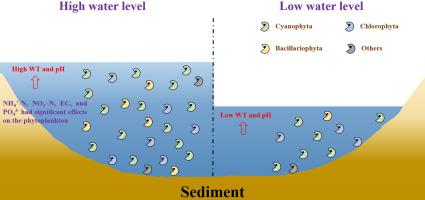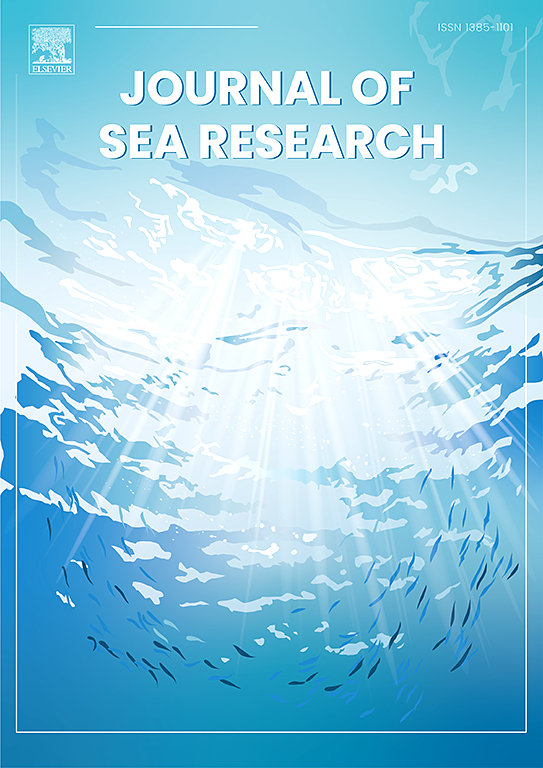Hydrological-driven changes in the phytoplankton community structure under nutrient stress in island river ecosystems
IF 2.9
4区 地球科学
Q2 MARINE & FRESHWATER BIOLOGY
引用次数: 0
Abstract
While the spatiotemporal dynamics of phytoplankton community structures in river ecosystems have been extensively studied, their primary driving factors remain elusive, particularly at the watershed scale. This research examined the phytoplankton community structure across three watersheds of an island and concurrently analyzed its response to water level fluctuations (WLFs). The phytoplankton density was notably higher at elevated water levels, registering an increase of 1.29 times in Nandu River, 1.34 times in Changhua River, and 1.28 times in Wanquan River. Notably, the middle reaches of the Changhua River recorded the highest phytoplankton density (4.46 × 108 cells/L). Broadly speaking, Cyanophyta, Chlorophyta, and Bacillariophyta remained the predominant phytoplankton across varied water levels. Dominant phytoplankton species varied with water levels; however, the most prevalent species consistently belonged to the Cyanophyta group, primarily Microcystis or Merismopedia, with dominance ranging between 0.17 to 0.38 (low water level) and 0.18 to 0.32 (high water level). Enhanced phytoplankton diversity and richness were observed at higher water levels, correlating with increased concentrations of NH4+-N, NO3−-N, and PO43− in the river water. Consequently, nutrient fluctuations driven by hydrodynamics significantly influence the phytoplankton community structure in island river ecosystems.

岛屿河流生态系统营养压力下水文驱动的浮游植物群落结构变化
尽管对河流生态系统中浮游植物群落结构的时空动态进行了广泛研究,但其主要驱动因素仍然难以捉摸,尤其是在流域尺度上。本研究考察了某岛三个流域的浮游植物群落结构,并同时分析了其对水位波动(WLF)的响应。水位升高时浮游植物密度明显增加,南渡江增加了 1.29 倍,昌化江增加了 1.34 倍,万泉河增加了 1.28 倍。值得注意的是,彰化溪中游的浮游植物密度最高(4.46 × 108 cells/L)。总的来说,在不同的水位条件下,浮游植物仍以蓝藻纲、叶绿藻纲和短叶绿藻纲为主。浮游植物的优势种类随水位的变化而变化;但是,最常见的种类始终属于蓝藻类,主要是微囊藻(Microcystis)或子囊藻(Merismopedia),优势度在 0.17 至 0.38(低水位)和 0.18 至 0.32(高水位)之间。水位越高,浮游植物的多样性和丰富度越高,这与河水中 NH4+-N、NO3--N 和 PO43- 的浓度增加有关。因此,水动力驱动的营养物质波动对岛屿河流生态系统中的浮游植物群落结构有重大影响。
本文章由计算机程序翻译,如有差异,请以英文原文为准。
求助全文
约1分钟内获得全文
求助全文
来源期刊

Journal of Sea Research
地学-海洋学
CiteScore
3.20
自引率
5.00%
发文量
86
审稿时长
6-12 weeks
期刊介绍:
The Journal of Sea Research is an international and multidisciplinary periodical on marine research, with an emphasis on the functioning of marine ecosystems in coastal and shelf seas, including intertidal, estuarine and brackish environments. As several subdisciplines add to this aim, manuscripts are welcome from the fields of marine biology, marine chemistry, marine sedimentology and physical oceanography, provided they add to the understanding of ecosystem processes.
 求助内容:
求助内容: 应助结果提醒方式:
应助结果提醒方式:


